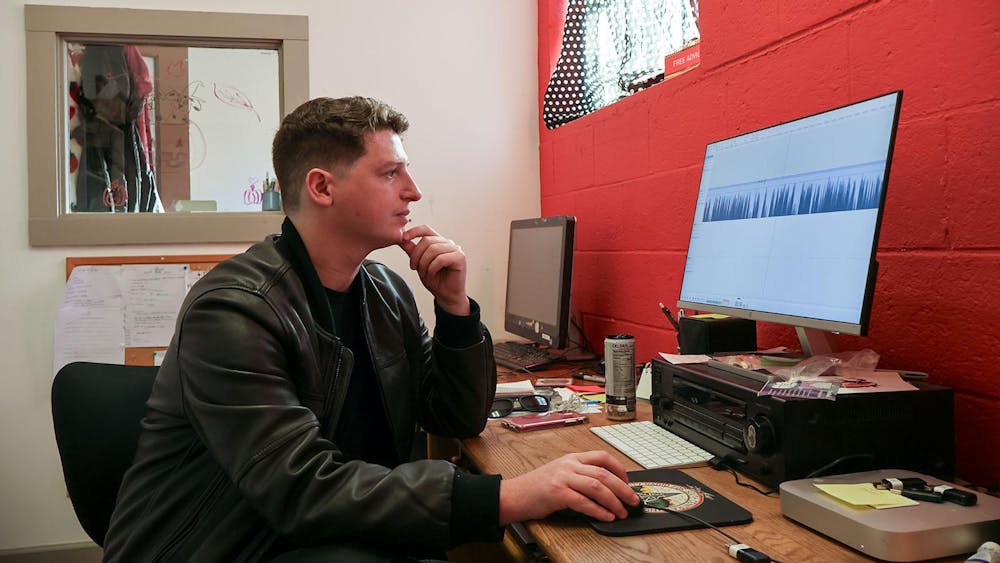Three workers who were severely burned last week in an electrical fire at the new Super Wal-Mart are on a long, slow road to recovery.\nAll three men currently remain in stable but critical condition at the Richard M. Fairbanks Burn Center in Wishard Memorial Hospital, a $16 million facility that bills itself as one of the most progressive burn centers in the nation.\n"There's a lot that goes into taking care of any burn patient," said Kari Gabehart, the clinical educator and a registered nurse at the Wishard burn center. "They have risks, just as any patient has risks."\nRobert Eury, 29, of Bloomington, is one of the men in critical condition after he was injured Aug. 26 when a piece of metal connected to a live electrical breaker shorted out the small room the men were working in and lit them on fire.\nEury suffered second- and third-degree burns to 85 percent of his body, along with Steve Abbott, 27, of Otterbein, Ohio, and Scott Shelton, 35, of Anderson, who were also severely burned. The men all worked for Electromation, Inc. of Muncie.\nCurrently the men are starting their second week of care, and the largest danger they face includes the risk of infection to areas that are without skin, the body's natural barrier to the elements. Gabehart said a special burn team gives severely burned patients around-the-clock care, with nurses changing dressings and monitoring body conditions on an hourly basis. Because of patient privacy laws, the burn center could not discuss the specific care the men are receiving, but Gabehart was able to speak in general about the care severely burned patients at Wishard require.\n"Severely burned patients get dressings changed two or three times a day, and each time it can take up to three hours," Gabehart said.\nIn addition, patients recieve continuous pain medication through IVs, "for obvious reasons," Gabehart said.\nBob Johnson, 46, a local friend of Eury, has been visiting the burn center often since the accident happened a little more than a week ago and said that last week Eury was in an induced coma while the nurses let his body begin to heal itself.\n"He's strong and stable," Johnson said. "They said that he was good."\nEury and his co-workers have at least a three-month in-patient recovery time ahead of them. Last week the burn center began grafting homograft skin from cadavers onto their bodies to protect them while they heal. Because Eury, Abbott and Shelton do not have much of their own skin that was unharmed in the electrical fire, their skin must be eventually grown for them.\n"The (homograft) skin is a temporary surface to give time to prepare the wound bed to accept the patient's skin," Gabehart explained. "We are continually taking the patient to surgery, making sure that the wound bed is clean."\nWhile their bodies receive temporary skin grafts, the men's own skin cells are being grown into strips of skin for eventual transplant. Cultured skin substitutes, as they are called, are made through a medical process where a biopsy is taken from what is left of the patient's skin and grown in a nutrient solution meshed together with a medical fabric that dissolves after being grafted to the wound, according to the Burn Survivor Resource Center Web site.\nThe tissue is grown in small batches and can take anywhere from 12 to 21 days to mature and be transported back to hospitals like Wishard. Once they arrive, surgeons treat them like any other skin graft, and after two or three weeks of healing, patients can begin rehabilitation. It takes up to two months for cultured skin to be grown to fully cover catastrophically burned patients, according to the Web site, like the Electromation contractors.\n"The goal is to get the patient covered," Gabehart said. "Once the wound is healed, the therapists work with the patients (to rehabilitate them)."\nBurn patients also require large amounts of fluids and high protein and calorie supplements to help their wounds heal, as well as intense rehabilitation to make sure the new skin grows properly over their joints.
Victims of accident at Wal-Mart site begin slow recovery
Lab-grown skin cells, cadavers used in healing process
Get stories like this in your inbox
Subscribe





